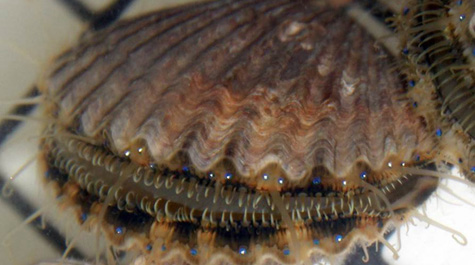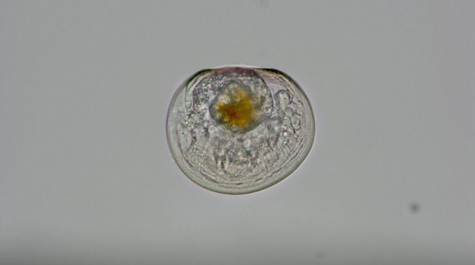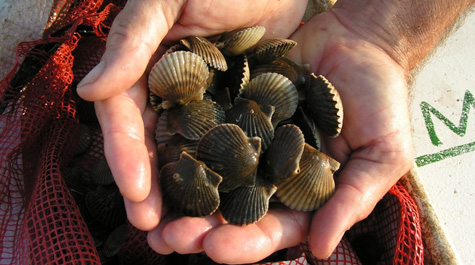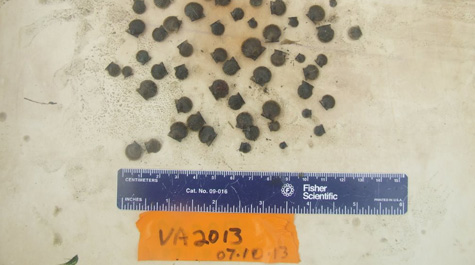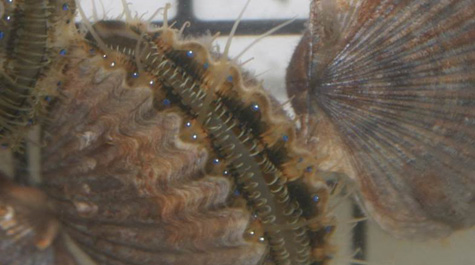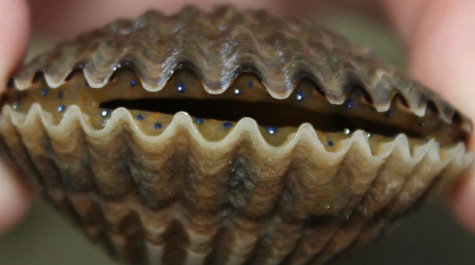Bay Scallop Restoration
Bay Scallop Restoration in the Coastal Bays
Bay scallops (Argopecten irradians) were once an abundant species on the seaside of Virginia’s Eastern Shore. In the early 1900s a profitable fishery existed for these animals in grassbeds of the seaside bays. However by 1933, the bay scallop population was decimated as a result of overfishing and loss of critical eelgrass habitat. Following this devastation, bay scallops were locally extinct for 70 years.
In 2001, the Virginia Institute of Marine Science (VIMS) initiated a large-scale eelgrass restoration effort that has since been recognized as one of the most successful ecological restoration projects in the world (Orth et al., 2020). With the reintroduction of eelgrass in the Eastern Shore’s southern lagoons, VIMS ESL then began an effort to re-establish the regional bay scallop population. Adult individuals from natural A. irradians populations were transported from the Bogue and Core Sounds in North Carolina and spawned at the VIMS Eastern Shore Laboratory (ESL). The progeny were deployed in bottom cages in hopes that concentrating a large number of animals in one suitable location could result in a sustainable wild population through their natural spawning cycles. The ESL hatchery-produced scallops also became the basis of future VIMS ESL broodstock. Several years after the initiation of the restoration effort, animals from distinct geographic locations on the US’s East and Gulf coasts were collected to include three different genetic lines in order to improve our restoration efforts and to continue aquaculture research on the species. (North Carolina, Florida, and New York).
VIMS ESL’s bay scallop production uses methods initially developed by Mike Castagna and ESL staff in the 1960s and ‘70s, and by Mike Oesterling at ESL in the 1990s. Aquaculture staff at ESL continues to improve upon the efficiency of hatchery and nursery culture of the bay scallop. Adult broodstock are spawned in the Spring and the Fall each year at ESL’s Castagna Shellfish Research Hatchery. The larvae produced from these spawns are reared in the hatchery and fed cultured microalgae before being transferred to the land-based nursery where they set, grow, and feed on phytoplankton naturally occurring in the Wachapreague Channel. Upon reaching a shell height of >3 millimeters, these individuals are either deployed in cages to grow and spawn in the restored seagrass beds, released in the grassbeds, or distributed to commercial growers for testing. While the scallops are held in ESL’s cages in relatively high densities, it is the hope that they are spawning and producing millions of larvae that will colonize the grassbeds. In more recent years, “spawning cages” have been temporarily relocated to other coastal bays in order to encourage a wider distribution of larval production during the scallops’ natural spawning season.
At ESL’s restoration site, deployed gear is maintained and replaced regularly throughout the grow-out period. Scallop survival and growth are monitored during these maintenance trips and cage stocking densities are reduced as the scallops grow. Scallops are released from these cages into the grassbeds at 14 months old. In addition to these scheduled releases, scallop pediveliger (ready to set) larvae, early post-set, and juveniles of various sizes are freely distributed throughout the grassbeds when numbers exceed the capacity of the hatchery, nursery, and/or grow-out site.

